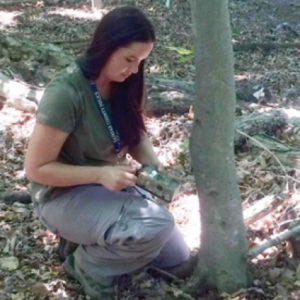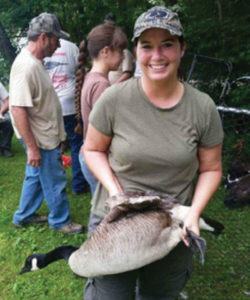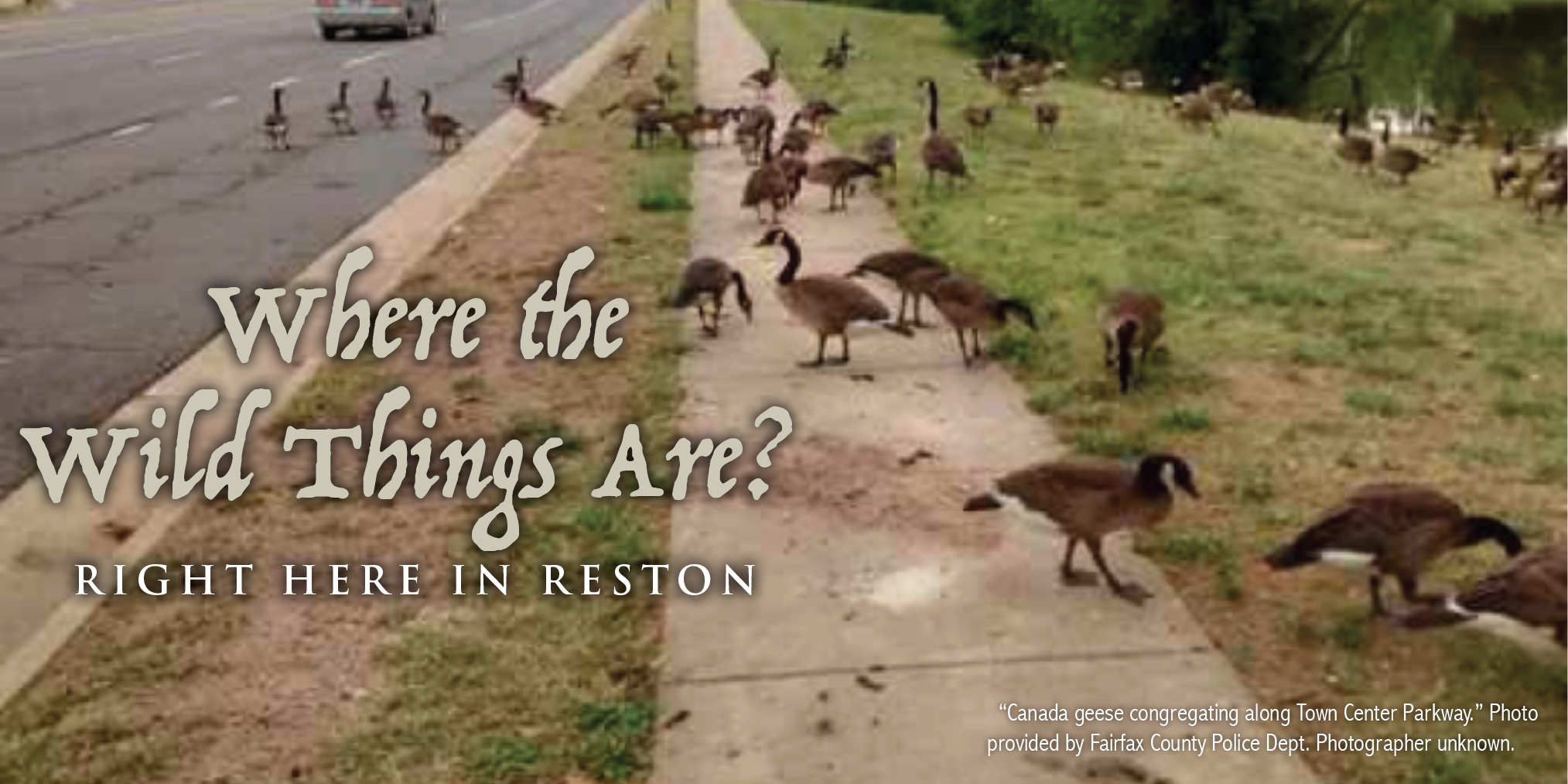“Besides our local parks and green spaces, wildlife have established themselves in some unexpected places within Fairfax County, including residential communities, business parks, and shopping and dining centers such as Reston Town Center,” Fairfax County Wildlife Management Specialist Dr. Katherine Edwards told members of the Osher Lifelong Learning Institute (OLLI) in a January 18 presentation in the Rose Gallery at the Lake Anne Reston Community Center.

Dr. Katherine Edwards setting up a game camera to conduct a wildlife survey in county parks. Photo provided by Katherine Edwards.
In a lecture titled “Those Critters Around Us: Fairfax County Wildlife,” Dr. Edwards said that the county “is home to a surprisingly diverse wildlife community.”
Edwards discussed how wild animals have adapted to the changing development in Fairfax County and readily make use of human-modified environments.
“Many wildlife species are opportunistic and can adapt, survive, and even thrive in suburban and urban environments that contain an abundance of available food, water, and shelter.
“Species that are generalists in terms of food and habitat such as raccoons, opossums, and foxes are now common and abundant in suburban areas,” she said. “These elements may not be in the form that we typically envision for wildlife, and may include unsecured garbage, pet food, attics, chimneys and crawl spaces that often lead to interactions and sometimes conflicts with humans.”
Edwards cautioned that human-provided food is one of the largest attractants for wildlife on residential properties and can have negative consequences for wildlife. These impacts can include changes in foraging behavior, malnourishment, spread of disease as creatures congregate to eat, and safety hazards as animals lose their natural fear of humans. For instance, raccoons are cunning in their abilities to raid trashcans, and even birdfeeders can draw attention from black bears, foxes and snakes that seek out prey feeding on spilled birdseed.
According to Edwards, Fairfax County has a growing presence of coyotes and red fox in county parks and residential neighborhoods, but this isn’t necessarily a bad thing. Both these animals play important ecological roles as natural predators and may help regulate prey populations, primarily rodents and other small mammals. Breeding for both coyotes and foxes occur during winter. During January and February, county residents often report startling, high-pitched vocalizations that resemble screaming in the woods behind their homes, due to amorous behavior of foxes.

Dr. Katherine Edwards assisting the Virginia Department of Game and Inland Fisheries with goose banding at Lake Fairfax, Aug., 2016. Banding is used as a tool to estimate goose populations and gain information on bird distribution, harvest rates, and survival. Photo provided by Fairfax County Police Dept. Photographer unknown.
Geese are a familiar sight to most county residents with opinions ranging from graceful waterfowl to public nuisance. There are two distinct populations of Canada geese that inhabit Fairfax County—migratory and resident. Present-day populations of resident geese are descendants from captive populations of migratory geese that decades ago were used largely by hunters as live decoys. Successive generations of geese never learned how to migrate. The county uses a variety of methods to manage Canada geese, including habitat modification and egg oiling to reduce flock growth.
Edwards also provided information to OLLI members on safety measures to take when in close proximity to wildlife, humane exclusion techniques to reduce wildlife conflicts, and public health concerns associated with wildlife and rabies.
While wildlife abounds in Fairfax County, wildlife management remains a challenge. Dr. Edwards concluded her presentation by providing tips on how residents can help conserve wildlife in local communities by planting native vegetation, retaining natural debris (leaf litter, fallen logs), or constructing artificial nest boxes or bat boxes.
For more information about wildlife in Fairfax County, visit the Fairfax County website: www.fairfaxcounty.gov/living/wildlife
For more information about how the OLLI at George Mason University provides first-rate educational, social, and cultural opportunities to citizens of Northern Virginia, go to: olli.gmu.edu







